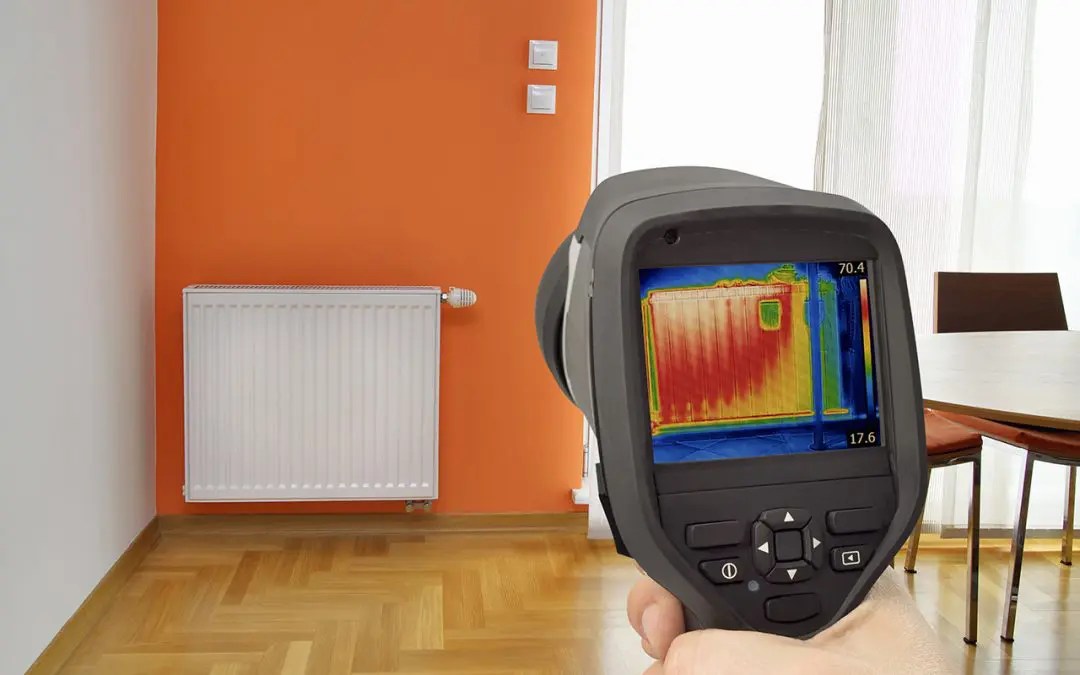What is Thermal Imaging?
Thermal imaging uses an infrared camera to take photos of an object’s infrared rays, which appear as a color spectrum based on the temperature emitted from the object. The image produced shows data otherwise invisible to the human eye. It’s helpful for detecting issues in the home that would be impossible to notice without the use of thermal imaging in home inspections.
What Can Thermal Imaging in Home Inspections Detect?
There are a variety of details about a home that can be discovered when using thermal imaging in home inspections. Two important things that thermal imaging helps the home inspector detect are moisture and insulation issues. While not noticeable enough to pinpoint with our natural senses, these problems will show up on an infrared image since they produce differences in temperature.
Moisture Intrusion
Infrared thermal imaging can detect a moisture intrusion issue before visible signs are present. By locating a leak in the early stages, you may be able to repair it before considerable damage has taken place. This advantage alone presents a strong case for using thermal imaging in home inspections.
Lacking Insulation
Oftentimes during a home inspection, the insulation is already in the walls and is not accessible to be inspected. With the use of a thermal imaging camera, areas of missing, inadequate, or damaged insulation will reveal themselves by showing up as different colors from the rest of the walls in the infrared image. An infrared camera can also point out areas in the home that are not airtight. By fixing both the airtightness and insulation issues, you can improve your home’s energy efficiency.
AWP Home Inspections offers Infrared Thermal Imaging Inspections to Central and West Central Indiana. Contact us to schedule your inspection.

